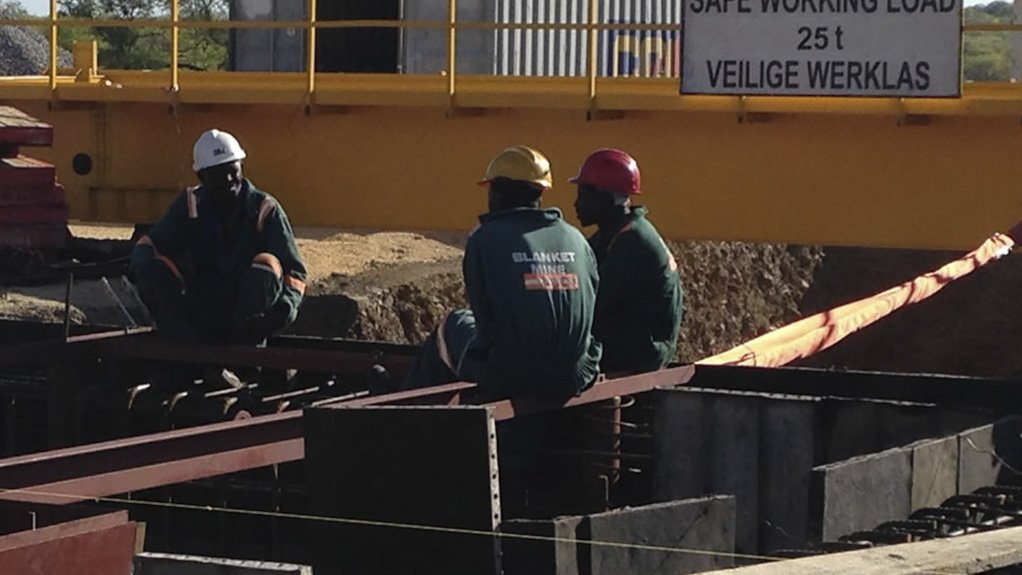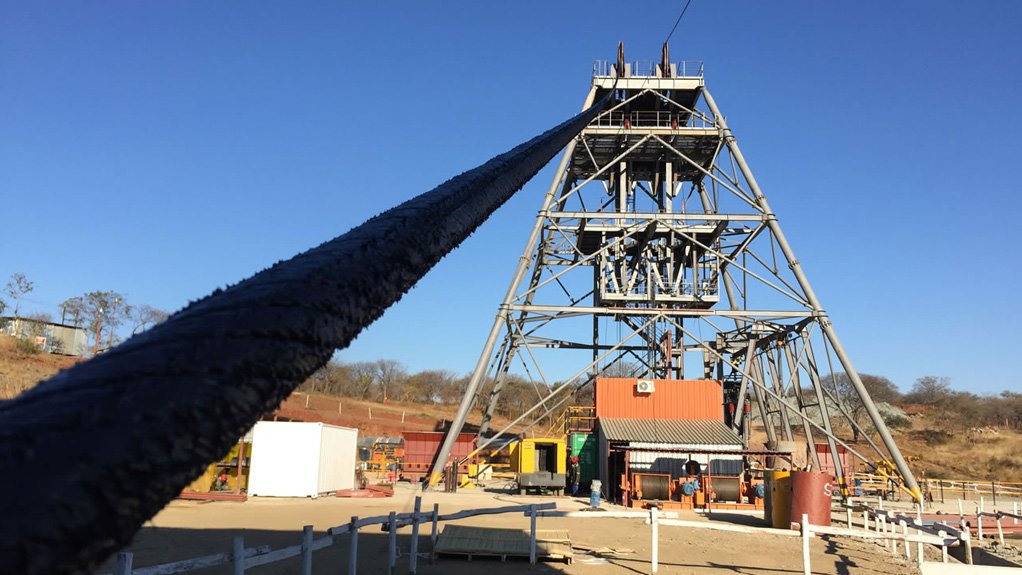Zim mining sector struggling to drive economic recovery



SKILLS SHORTAGE The large-scale loss of indigenous skills has negatively affected the mining industry, supplier firms as well as teaching and technology institutions
KEY ISSUES Together with beneficiation, indigenisation has been another key policy objective that is influencing the design of policies in Zimbabwe’s minerals and industrial sector
Zimbabwe’s mining sector was historically characterised by well-developed upstream and downstream industries. However, with the economic crisis in the early 2000s, capacity use in the manufacturing sector declined from about 80% in 2000 to 26% in 2015.
This is according to a report titled ‘Mining-related national systems of innovatios in Southern Africa: national trajectories and regional integration,’ which was recently published by researchers at University of Johannesburg-affiliated research and capacity development think-tank the Centre for Competition Regulation and Economic Development (CCRED).
The paper states that, medium- to high-technology exports from Zimbabwe have stagnated particularly. The think-tank notes that the large-scale loss of indigenous skills has negatively affected the mining industry, supplier firms and teaching and technology institutions. The Zimbabwe Chamber of Mines estimates that more than half of the industry’s skilled personnel have emigrated from the country since 2007.
Since 2010, foreign direct investment (FDI) inflows into mining have resumed from a low level, coupled with significant imports of capital equipment. The CCRED says that the mining sector is currently the main driver of economic recovery in Zimbabwe, and the World Bank in 2014 argued that the growth prospects for manufacturing rested mainly in domestic demand, in particular linked to the resource sector.
“Manufacturing [in Zimbabwe] is still highly diversified, compared with other African countries, but firms have downsized considerably and import penetration in the supply chain is high.”
The World Bank states that supply-side constraints are currently more critical than demand-side ones in Zimbabwe as firms are operating obsolete machinery, struggle to access finance and operate in a high-cost and volatile environment, owing to regular power outages, imported inputs and unreliable supply chains.
The CCRED points out that, in the high-level power struggle over mining rights and revenues in Zimbabwe, local content issues have been “relatively marginalised”. The crisis has therefore had a twofold impact on the local supply chain.
Some Zimbabwe firms moved away from manufacturing to distribution, while other international original-equipment manufacturers (OEMs) sold their subsidiaries to local investors. The overall decline has been “staggering”, with more than 50% of foundries having closed down out of more than 20 foundries in operation a decade ago.
In metal fabrication, 25% of firms identified by the same study had closed down, while 40% in heavy machinery had also shut down. The research institute notes that when mining production recovered, local suppliers were unable to meet local demand or reinvest to resuscitate the industry and catch up with precrisis capabilities.
The CCRED mentions that Zimbabwe’s policy framework is largely focused on mineral beneficiation, which is included as a priority in the country’s Mid-Term Plan 2011 to 2015 and more recently in the Zimbabwe Agenda for Sustainable Socio-Economic Transformation 2013 to 2018, which is the government’s latest blueprint for economic development.
According to interviews with the Ministry of Economic Planning and Investment Promotion, concerns over tax avoidance are leading policy-makers to look at beneficiation as a mechanism to introduce transparency in the sector. Currently, there is limited local beneficiation and value addition of minerals, resulting in about 90% of the minerals being exported raw or in a semi-processed state.
The report states that, to promote beneficiation, government reduced royalties applicable to mineral output destined to domestic downstream industries. However, the CCRED notes that this had to be tempered by considerations of existing production capabilities.
Together with beneficiation, indigenisation has been another key policy objective that is influencing the design of policies in Zimbabwe’s mineral and industrial sector.
“Currently, there is no interest in linking the indigenisation agenda to increasing mining local content, even if several stakeholders interviewed for this research indicated that there would be concrete opportunities in this area.
However, during the last part of 2015, under pressure from the Confederation of Zimbabwe Industries, local content had begun to feature on the political agenda.”
Zimbabwe’s Industrial Development Policy 2012 to 2016 is aimed at the recovery of the manufacturing sector – steel production in particular – which has seen low levels of implementation, mainly owing to lack of resources and low levels of domestic and foreign investment.
The report further notes that the country’s minerals sector is regulated by the 2005 Mines and Minerals Act, which does not include “very strong provisions on local content”. A minerals policy has thus been in the drafting process for many years, inclusive of a number of interventions related to stimulation of backward, forward, spatial and fiscal linkages, improved transparency and the introduction of progressive taxation.
“Interviews with key respondents highlight that the failure to conclude the design of this policy has hindered the development of strategies related to skills development, FDI and local content,” the CCRED states.
Comments
Press Office
Announcements
What's On
Subscribe to improve your user experience...
Option 1 (equivalent of R125 a month):
Receive a weekly copy of Creamer Media's Engineering News & Mining Weekly magazine
(print copy for those in South Africa and e-magazine for those outside of South Africa)
Receive daily email newsletters
Access to full search results
Access archive of magazine back copies
Access to Projects in Progress
Access to ONE Research Report of your choice in PDF format
Option 2 (equivalent of R375 a month):
All benefits from Option 1
PLUS
Access to Creamer Media's Research Channel Africa for ALL Research Reports, in PDF format, on various industrial and mining sectors
including Electricity; Water; Energy Transition; Hydrogen; Roads, Rail and Ports; Coal; Gold; Platinum; Battery Metals; etc.
Already a subscriber?
Forgotten your password?
Receive weekly copy of Creamer Media's Engineering News & Mining Weekly magazine (print copy for those in South Africa and e-magazine for those outside of South Africa)
➕
Recieve daily email newsletters
➕
Access to full search results
➕
Access archive of magazine back copies
➕
Access to Projects in Progress
➕
Access to ONE Research Report of your choice in PDF format
RESEARCH CHANNEL AFRICA
R4500 (equivalent of R375 a month)
SUBSCRIBEAll benefits from Option 1
➕
Access to Creamer Media's Research Channel Africa for ALL Research Reports on various industrial and mining sectors, in PDF format, including on:
Electricity
➕
Water
➕
Energy Transition
➕
Hydrogen
➕
Roads, Rail and Ports
➕
Coal
➕
Gold
➕
Platinum
➕
Battery Metals
➕
etc.
Receive all benefits from Option 1 or Option 2 delivered to numerous people at your company
➕
Multiple User names and Passwords for simultaneous log-ins
➕
Intranet integration access to all in your organisation




















